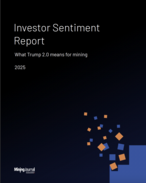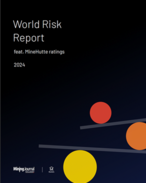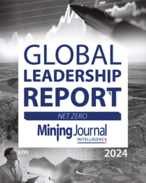Glencore's once coherent climate strategy has collapsed into a mess of contradictions. But after cancelling plans to divest its coal, the commodities giant is ready to go on the warpath once again with met coal and copper assets the most likely targets.
This week, the miner and trader abandoned its plans to spin out its coal business, though whether it has caved to investor demands or is just doing what it always planned is an open question. What is not in question is that the miner now has the revenue and the capacity to make good on its promise to build up its project pipeline.
Expect, at the very least, some copper acquisitions, whether pre- or post-production. With the company now back in the coal game for the foreseeable future, it is likely to be looking for met coal assets. But for a company the size of Glencore, a bigger deal could be in the offing.
Double U-turn
Glencore's decision to hold onto coal is the second abrupt change of heart that chief executive Gary Nagle has had on the subject in under a year. Cynics may wonder if that was the plan all along.
Prior to 2023, Glencore had a coherent and profitable coal strategy: hold onto existing coal assets but don't invest in extending their lives, allowing them to be closed early as grades depleted and prices fell over the long term.
Although green investors never really warmed to that argument, it stands up to scrutiny. Divesting thermal coal assets, as most other diversified miners have done, doesn't actually do anything to reduce coal production. All it means is selling all the coal at once rather than over time. In fact, divestment is likely to actually increase coal production over time, as pure-play coal companies, unlike diversified miners, are unlikely to have many environmentally-minded shareholders arguing for early mine closure.
Glencore's strategy bore fruit in 2022 when the Russian full-scale invasion of Ukraine delivered an unexpected windfall to coal miners as energy prices spiked, validating the company's decision to hold onto its mines.
But then came Teck.
Glencore's 2023 pursuit of the Canadian miner saw coal move to centre stage. Teck attempted to throw off Glencore by spinning out its coal business while spurring its shareholders to reject a deal that would see them take a stake in Glencore, including its existing thermal coal assets. It was as part of this tussle that Nagle eventually came up with his own coal divestment plan, essentially designed to ease the concerns of Teck shareholders.
Glencore failed to capture Teck outright but struck a deal in November 2023 to buy Elk Valley Resources, Teck's metallurgical coal business. This consolation prize was well short of what Glencore wanted, but it did leave the miner with some excellent coal assets.
At the time, Nagle argued that the Elk Valley business would be a sweetener for a coal spin-out. Met coal, he argued, was a future-facing commodity quite unlike thermal coal. With the Elk Valley assets, he suggested that Glencore coal could thrive as a standalone business, listed somewhere far away from coal-averse European investors.
Greenwashing with met coal
Nagle's coal spin-out scheme was always questionable. As I wrote at the time, it left the company essentially hostage to fortune, with no guarantee that the market had any interest in what it was selling. The deal was predicated on the untested idea that there is a huge and unmet appetite for pure-play coal miners on the NYSE or any other exchange.
Underpinning the whole scheme was the idea that markets would view metallurgical coal as somehow cleaner and greener than thermal coal, allowing Elk Valley's met coal to greenwash the other Glencore coal assets.
The truth is that coal is coal. Burning coal to make steel is no different than burning coal to generate electricity. The only difference is that there are other ways to generate electricity, while there is, as yet, no other cost-effective way to produce primary steel. This is a valid argument but not an easy one to sell when many institutional investors would prefer to avoid the mining sector altogether.
But Nagle's latest about-face suggests that maybe the coal divestment plan was never really supposed to stand up to scrutiny. It was only ever meant to woo Teck shareholders, and with that deal off the table, the plan had served its purpose.
What comes next?
So what now for Glencore? With no divestment to concentrate on, Nagle's diary may be looking a little empty. That means more capacity to look at other deals. And the continued revenues from the retained coal business will make those easier.
Glencore has already promised to build out the company's copper pipeline. And speaking to analysts, Nagle also said that met coal deals could be on the table, if the price is right.
The most tempting coal assets on the auction block are Anglo American's Queensland mines, even if one of them is currently on fire.
Glencore has already been suggested as a buyer of those assets, and that likelihood has only increased.
But Anglo is only selling its Queensland coal as part of its own survival plan. Just like Teck, it is spinning out assets to avoid a total take-over, in Anglo's case an abortive bid by BHP.
So, could the Queensland coal be the appetiser, with Anglo itself as the main course?
BHP could be in the crosshairs
Glencore is in many ways a better fit for Anglo than BHP ever was. Glencore and Anglo already share ownership of the massive Collahuasi mine in Chile. And South Africa, which proved such a sticking point in the BHP-Anglo negotiations, would likely prove less of an issue.
Glencore, which already owns coal and manganese businesses in South Africa, would be unlikely to balk at the prospect of taking on Kumba Iron Ore, which BHP was demanding be divested. Glencore's long history in Africa and the fact that both the current and former chief executives are South African nationals could help avoid some of the culture clashes that derailed BHP.
Nagle has taken his shareholders on a long and winding road since the company first bid for Teck in early 2023. Now would be a good time to show that that road is leading somewhere.






















MJ COMMENT
A bigger, dirtier, coal-fired Glencore looks hungrier than ever
What next for the commodities giant?
Credit: Glencore
Glencore's once coherent climate strategy has collapsed into a mess of contradictions. But after cancelling plans to divest its coal, the commodities giant is ready to go on the warpath once again with met coal and copper assets the most likely targets.
This week, the miner and trader abandoned its plans to spin out its coal business, though whether it has caved to investor demands or is just doing what it always planned is an open question. What is not in question is that the miner now has the revenue and the capacity to make good on its promise to build up its project pipeline.
Expect, at the very least, some copper acquisitions, whether pre- or post-production. With the company now back in the coal game for the foreseeable future, it is likely to be looking for met coal assets. But for a company the size of Glencore, a bigger deal could be in the offing.
Double U-turn
Glencore's decision to hold onto coal is the second abrupt change of heart that chief executive Gary Nagle has had on the subject in under a year. Cynics may wonder if that was the plan all along.
Prior to 2023, Glencore had a coherent and profitable coal strategy: hold onto existing coal assets but don't invest in extending their lives, allowing them to be closed early as grades depleted and prices fell over the long term.
Although green investors never really warmed to that argument, it stands up to scrutiny. Divesting thermal coal assets, as most other diversified miners have done, doesn't actually do anything to reduce coal production. All it means is selling all the coal at once rather than over time. In fact, divestment is likely to actually increase coal production over time, as pure-play coal companies, unlike diversified miners, are unlikely to have many environmentally-minded shareholders arguing for early mine closure.
Glencore's strategy bore fruit in 2022 when the Russian full-scale invasion of Ukraine delivered an unexpected windfall to coal miners as energy prices spiked, validating the company's decision to hold onto its mines.
But then came Teck.
Glencore's 2023 pursuit of the Canadian miner saw coal move to centre stage. Teck attempted to throw off Glencore by spinning out its coal business while spurring its shareholders to reject a deal that would see them take a stake in Glencore, including its existing thermal coal assets. It was as part of this tussle that Nagle eventually came up with his own coal divestment plan, essentially designed to ease the concerns of Teck shareholders.
Glencore failed to capture Teck outright but struck a deal in November 2023 to buy Elk Valley Resources, Teck's metallurgical coal business. This consolation prize was well short of what Glencore wanted, but it did leave the miner with some excellent coal assets.
At the time, Nagle argued that the Elk Valley business would be a sweetener for a coal spin-out. Met coal, he argued, was a future-facing commodity quite unlike thermal coal. With the Elk Valley assets, he suggested that Glencore coal could thrive as a standalone business, listed somewhere far away from coal-averse European investors.
Greenwashing with met coal
Nagle's coal spin-out scheme was always questionable. As I wrote at the time, it left the company essentially hostage to fortune, with no guarantee that the market had any interest in what it was selling. The deal was predicated on the untested idea that there is a huge and unmet appetite for pure-play coal miners on the NYSE or any other exchange.
Underpinning the whole scheme was the idea that markets would view metallurgical coal as somehow cleaner and greener than thermal coal, allowing Elk Valley's met coal to greenwash the other Glencore coal assets.
The truth is that coal is coal. Burning coal to make steel is no different than burning coal to generate electricity. The only difference is that there are other ways to generate electricity, while there is, as yet, no other cost-effective way to produce primary steel. This is a valid argument but not an easy one to sell when many institutional investors would prefer to avoid the mining sector altogether.
But Nagle's latest about-face suggests that maybe the coal divestment plan was never really supposed to stand up to scrutiny. It was only ever meant to woo Teck shareholders, and with that deal off the table, the plan had served its purpose.
What comes next?
So what now for Glencore? With no divestment to concentrate on, Nagle's diary may be looking a little empty. That means more capacity to look at other deals. And the continued revenues from the retained coal business will make those easier.
Glencore has already promised to build out the company's copper pipeline. And speaking to analysts, Nagle also said that met coal deals could be on the table, if the price is right.
The most tempting coal assets on the auction block are Anglo American's Queensland mines, even if one of them is currently on fire.
Glencore has already been suggested as a buyer of those assets, and that likelihood has only increased.
But Anglo is only selling its Queensland coal as part of its own survival plan. Just like Teck, it is spinning out assets to avoid a total take-over, in Anglo's case an abortive bid by BHP.
So, could the Queensland coal be the appetiser, with Anglo itself as the main course?
BHP could be in the crosshairs
Glencore is in many ways a better fit for Anglo than BHP ever was. Glencore and Anglo already share ownership of the massive Collahuasi mine in Chile. And South Africa, which proved such a sticking point in the BHP-Anglo negotiations, would likely prove less of an issue.
Glencore, which already owns coal and manganese businesses in South Africa, would be unlikely to balk at the prospect of taking on Kumba Iron Ore, which BHP was demanding be divested. Glencore's long history in Africa and the fact that both the current and former chief executives are South African nationals could help avoid some of the culture clashes that derailed BHP.
Nagle has taken his shareholders on a long and winding road since the company first bid for Teck in early 2023. Now would be a good time to show that that road is leading somewhere.
RELATED ARTICLES
THEMES:
TOPICS:
< PREVIOUS ARTICLE
Copper space heating up
NEXT ARTICLE >
Op:ed - Why sustainable tax principles must be at the centre of the energy transition
Get the Mining Journal Newsletter delivered free each day
FROM OUR PARTNERS
PARTNER CONTENT
Macquarie Arc: Elephants hiding in plain sight
PARTNER CONTENT
BHP builds 'beautiful' Xplor community